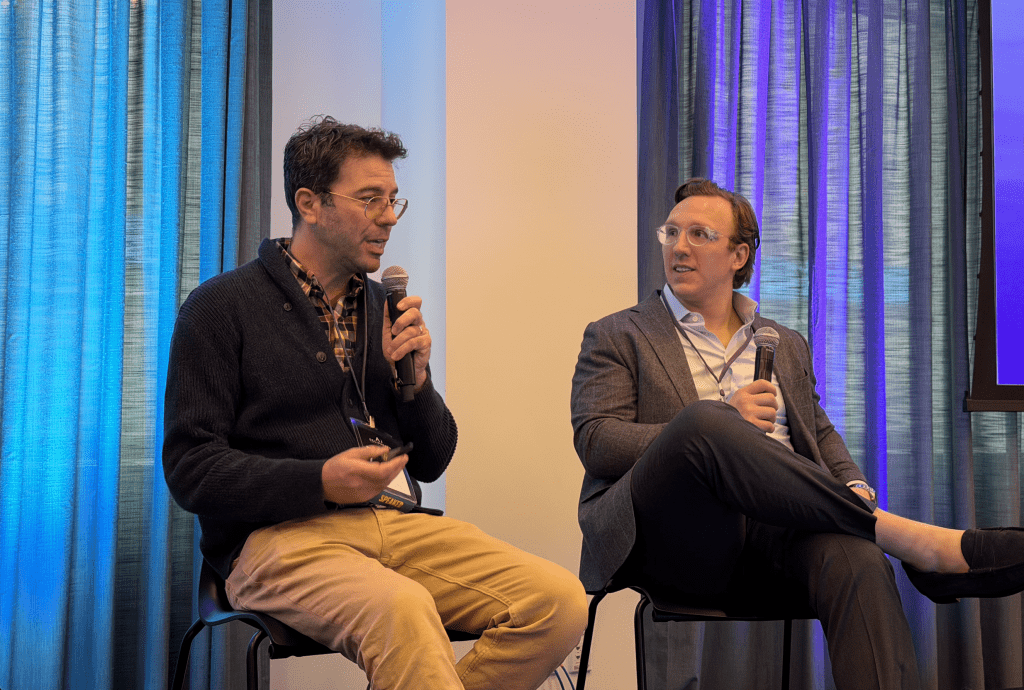Consumers are using ChatGPT and similar tools for health advice, supplement selection and medical research. Whether healthcare brands appear in those conversations, and how they’re characterized, increasingly falls outside traditional marketing control. That’s creating a fair amount of anxiety, and driving early action, within pharmaceutical and healthcare companies.
Healthcare marketers at AI Deciphered examined this critical strategic communications development and described 2025 as a turning point for brand reputation management, with discovery patterns shifting from traditional search engines to large language model (LLMs) interactions.
Consumer Health Company Springs into Action
Kelly Kavanagh, U.S. senior director of integrated marketing and media at Haleon, described her company’s response to this brand reputation and corporate communications challenge during a breakout session focused on healthcare reputation in the AI era.
Haleon, a three-year-old consumer healthcare company that markets brands including Advil and Sensodyne, has spent 2025 establishing monitoring systems for LLM mentions.
“This year was the year of the big aha. Like ‘Guys, we got to start paying attention, really paying attention to what this dynamic of the AI world is bringing,’” Kavanagh said.
The company tracks “share of mentions” across LLM platforms, monitoring how brands appear in conversational AI responses rather than traditional keyword searches. Kavanagh said this requires rethinking owned content strategy: “It’s no longer a keyword search that’s going on.”
Haleon focuses on social media presence and content sources that LLMs index, with particular attention to platforms like Reddit. The company also monitors e-commerce sites like Amazon and Walmart, which Kavanagh called “feeders into the LLMs” for consumer health products.
A B2B Story: Pharmaceutical Company Works Behind the Scenes
Maria Verastegui, global marketing leader and former head of marketing promotions at Merz Therapeutics, said pharmaceutical companies are still addressing internal adoption rather than external reputation management.
“In pharma, there’s a big opportunity right now to define that space in brand reputation, because as I see it, right now, pharma is really diving in to understand what’s the technology and how can we use it,” Verastegui said, adding that pharmaceutical organizations remain focused on “how can we implement it internally, how can we get adaptation within the organization so that people can start to even play with it.”
Transparency is a key opportunity as companies move from internal experimentation to strategic reputation management, she said, suggesting pharmaceutical companies that clearly communicate their AI usage in patient communications could establish competitive positioning.
“There’s a great opportunity for pharma right now to define their brand, the transparency that they’re going to set forward as they start to use AI more on a day-to-day basis,” she added.
Yet Verastegui said most companies are hesitant to capitalize on this opportunity. “What I’m hearing so far is people still trying to figure out how they’re going to skill up their organization,” she said. “They’re still talking about removing the fear of AI within the organization.”
While Humans and AI Are Sprinting Ahead, There’s Still Much to Do
Kavanagh said Haleon has built custom agents, including one focused on GLP-1 medications, that the executive team tested in recent sessions. The company has also worked with consulting groups to educate leadership about AI capabilities and risks.
Demonstrating AI functionality to executives produces different results than internal team recommendations, she said. After one external consulting session, the takeaway from Kavanagh’s CMO was essentially “Oh my god, we got a lot to do,” despite being knowledgeable about AI applications.
Verastegui described a five-day sprint at Merz Therapeutics that used AI for global campaign development, bringing together creative teams, copywriters and company representatives across U.S. and European markets. The process, which normally takes months, produced four to five marketing and PR campaign concepts ready for market research within a week.
“It was a lot of human work and a lot of AI generation,” Verastegui said, emphasizing that the process required continuous human guidance rather than autonomous AI operation. Regulatory teams participated throughout to ensure compliance.
The AI Imperative: Industry Acknowledges the Need for New Website Strategies
Audience members asked how branded websites should adapt to serve both human visitors and LLM data collection. Kavanagh cited a LinkedIn observation: “The open web is no longer a destination strategy; it’s a data set that you need to think about.” Website optimization now focuses on content quality and formatting rather than traditional SEO tagging practices.
The goal is to create brand storytelling and content that work consistently across multiple communication channels and platforms. “Having that consistent voice across all of those different touch points is critically important, not only for consumers who come across it, but really to help feed that consistency into the LLMs,” Kavanagh said.
Both speakers emphasized the importance of maintaining content consistency across owned properties, including e-commerce platforms where LLMs may source product information.
Measurement Remains a Challenge
Session moderator Jack O’Brien asked about KPIs for evaluating AI strategy success.
The question drew laughter but limited specific response.
This suggests that measurement frameworks remain in development.
This measurement gap appears consistent with earlier comments about 2025 being a year of recognition and initial response rather than mature implementation.
Less Control = More Anxiety
Session speakers continued returning to a core anxiety: Consumers are already using AI for health information, but healthcare brands lack visibility into and control of those interactions.
The concern extends beyond marketing efficiency to fundamental questions about brand representation when discovery happens through conversational AI rather than search engines.
If consumers ask ChatGPT for migraine treatment options or supplement recommendations, do your brands appear? How are they characterized? What competing products are mentioned alongside yours? These questions don’t have standardized answers yet.
Kavanagh noted this represents “the fastest increase in new customer acquisition as a channel,” but it’s a channel where traditional marketing controls don’t fully apply.




